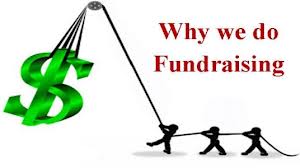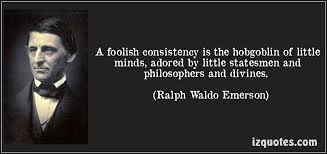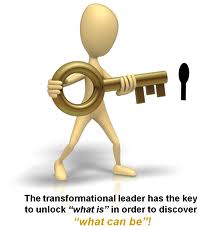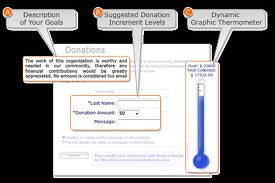Dani Robbins is the Founder & Principal Strategist at Non Profit Evolution located in Columbus, Ohio. I’ve invited my good friend and fellow non-profit consultant to the first Wednesday of each month about board development related topics. Dani also recently co-authored a book titled “Innovative Leadership Workbook for Nonprofit Executives” that you can find on Amazon.com.
Governance: The Work of the Board, part 4
Raising Money
By Dani Robbins
 Welcome to part four of our five part series on Governance. We have already discussed the Board’s role in Hiring, Supporting and Evaluating the Executive, Acting as the Fiduciary Responsible Agent, and Setting Policy. Today, let’s discuss the Board’s role in raising money.
Welcome to part four of our five part series on Governance. We have already discussed the Board’s role in Hiring, Supporting and Evaluating the Executive, Acting as the Fiduciary Responsible Agent, and Setting Policy. Today, let’s discuss the Board’s role in raising money.
As previously mentioned, Boards are made up of appointed community leaders who are collectively responsible for governing an organization. As outlined in my favorite Board book Governance as Leadership and summarized in The Role of the Board, the Fiduciary Mode is where governance begins for all boards and ends for too many. I encourage you to also explore the Strategic and Generative Modes of Governance, which will greatly improve your board’s engagement, and also their enjoyment.
At a minimum, governance includes:
- Setting the Mission, Vision and Strategic Plan
- Hiring, Supporting and Evaluating the Executive Director
- Acting as the Fiduciary Responsible Agent
- Raising Money and
- Setting Policy
One of my goals for this blog is to rectify the common practice in the field of people telling nonprofit executives and boards how things should be done without any instruction as to what that actually means or how to accomplish it.
What “Board members being responsible for raising money” means is:
The Board sets the fund raising (also called resource development) goal; embarks on the campaign; opens doors; introduces staff; “makes the ask” when they’re the most likely person to get a yes (regardless of title or ranking, you always send the person who is most likely to get a yes to a gift request); picks up the tab for lunch when possible; and thanks the donor. The Board is also responsible for setting the strategic plan which may include a goal to increase contributed income. Each Board member should be expected to make a significant gift, reflective of their personal circumstances, as well as raise additional money.
I do not recommend give or get policies.
Give or get policies allow Board members to avoid personally giving; and 100% Board giving is critical for a successful campaign. Potential donors will ask if there is 100% Board giving, and the answer must be “yes“. Why should anyone else support an organization whose Board members do not? Moreover, how can you ask for someone else to financially support an organization you do not financially support? I can hear someone out there saying “I give of my time,” and that is wonderful, but it’s not enough. Board members should also financially support the organizations they serve.
I also don’t recommend set giving requirements.
Set giving policies, intended to be minimum gifts, actually end up being the entire gift. Such policies alienate potential board members who may bring a lot to the table but cannot personally give at the set level. It also leaves money on the table for people who can give more. Finally, it eliminates the Resource Development Committee’s opportunity to seek out and personally ask each Board member for a specific (to their circumstances and level of engagement) gift. It takes away the chance to say thank you for your engagement, removes the possibility to steward Board members as donors and minimizes the chance of a larger gift. Any policy that works against your goals is not a good policy.
The Board cannot and is not expected to raise money alone.
The staff is responsible for training the Board; coordinating the assignments; preparing the askers with relevant donor information; drafting and supplying whatever written information will be left with the donor, including a case statement (also called case for support) and a letter asking for a specific dollar amount; attending the ask meetings as appropriate; documenting the meeting in the database; writing the formal thank you note; and creating a plan to steward (or circle back to) the donor going forward.
The executive director cannot raise money alone. The development director cannot raise money alone. Fundraising works best in a culture of philanthropy when both the staff and the Board are working together to increase contributed income.
What’s been your experience? As always, I welcome your insight and experience.


 Recently, I’ve been doing a lot of what I consider “Nonprofit 101” trainings focused on board roles and responsibilities. After talking with board members about their fiduciary responsibilities, they often push back on their role in fundraising. I’m becoming really good at giving them the “sympathetic smile,” which communicates that I’m hearing their fear but not giving them permission to wash their hands of their role in resource development.
Recently, I’ve been doing a lot of what I consider “Nonprofit 101” trainings focused on board roles and responsibilities. After talking with board members about their fiduciary responsibilities, they often push back on their role in fundraising. I’m becoming really good at giving them the “sympathetic smile,” which communicates that I’m hearing their fear but not giving them permission to wash their hands of their role in resource development. After all, how scary can it be to “tell stories,” right?
After all, how scary can it be to “tell stories,” right? Welcome to O.D. Fridays at DonorDreams blog. Every Friday for the foreseeable future we will be looking at posts from John Greco’s blog called “
Welcome to O.D. Fridays at DonorDreams blog. Every Friday for the foreseeable future we will be looking at posts from John Greco’s blog called “ Well, huh? Let me see here. Every good planning process begins with an assessment /evaluation which springboards off into goal setting, strategy development and action planning. If the organization I just referenced hadn’t been so “foolishly consistent,” they would’ve seen the following:
Well, huh? Let me see here. Every good planning process begins with an assessment /evaluation which springboards off into goal setting, strategy development and action planning. If the organization I just referenced hadn’t been so “foolishly consistent,” they would’ve seen the following: The board members and executive director of the agency I reference in the example above certainly were “little“. I say this because their “foolish consistency” and unwillingness to do any assessment and planning had locked them into being a certain size. When you looked at their agency budget, they had brought in the same amount of revenue for the last 10 years.
The board members and executive director of the agency I reference in the example above certainly were “little“. I say this because their “foolish consistency” and unwillingness to do any assessment and planning had locked them into being a certain size. When you looked at their agency budget, they had brought in the same amount of revenue for the last 10 years.
 There are exceptions to my general rule of “no selling”. The Girl Scouts and Boy Scouts sell cookies and popcorn very well. Their troops, which are volunteer-led, rely on those sales for most of their troop activities. Good for them! There are also
There are exceptions to my general rule of “no selling”. The Girl Scouts and Boy Scouts sell cookies and popcorn very well. Their troops, which are volunteer-led, rely on those sales for most of their troop activities. Good for them! There are also
 I am of the opinion that those of us who still use the economy to explain our shortcomings are simply making excuses. In fact, let me take it a step further. Invoking the economy to explain your poor fundraising performance is nothing short of excuse making.
I am of the opinion that those of us who still use the economy to explain our shortcomings are simply making excuses. In fact, let me take it a step further. Invoking the economy to explain your poor fundraising performance is nothing short of excuse making. Empathize . . . they are grieving the lack of results from their collective efforts
Empathize . . . they are grieving the lack of results from their collective efforts Jeff Bezos has been on my mind lately. Of course, he is the 49-year-old owner of Amazon.com, and this internet pioneer recently purchased one of the iconic old media newspapers — The Washington Post — for $250 million. It was no more than a few days after this announcement that I was talking to a non-profit board volunteer about fundraising when I was reminded of this famous Jeff Bazos quotation: “A company shouldn’t get addicted to being shiny, because shiny doesn’t last.”
Jeff Bezos has been on my mind lately. Of course, he is the 49-year-old owner of Amazon.com, and this internet pioneer recently purchased one of the iconic old media newspapers — The Washington Post — for $250 million. It was no more than a few days after this announcement that I was talking to a non-profit board volunteer about fundraising when I was reminded of this famous Jeff Bazos quotation: “A company shouldn’t get addicted to being shiny, because shiny doesn’t last.” I am a huge proponent of using technology and integrating it into your non-profit organization’s fundraising program, but it shouldn’t be introduced in a way that undercuts the other best practices embedded in your resource development plan.
I am a huge proponent of using technology and integrating it into your non-profit organization’s fundraising program, but it shouldn’t be introduced in a way that undercuts the other best practices embedded in your resource development plan. More than a year ago, I stumbled upon a fun article published in the Stanford Social Innovation Review (SSIR) titled “
More than a year ago, I stumbled upon a fun article published in the Stanford Social Innovation Review (SSIR) titled “ So, the conversations I’ve been referencing throughout this post have to do with board development and not the actual revenue models.
So, the conversations I’ve been referencing throughout this post have to do with board development and not the actual revenue models. I am sicker than a dog and my mind is foggy, which is why I couldn’t post yesterday. However, the thought of not posting two days in a row is inconceivable to me. So, I find myself sitting here staring at a blank screen wondering what I should type. Rather than wax poetic about a current event or best practice, I’m going to share with you a question that another blogger touched upon a few months ago. Ever since reading it, I just haven’t been able to get it out of my head. Are you ready? Because here it is:
I am sicker than a dog and my mind is foggy, which is why I couldn’t post yesterday. However, the thought of not posting two days in a row is inconceivable to me. So, I find myself sitting here staring at a blank screen wondering what I should type. Rather than wax poetic about a current event or best practice, I’m going to share with you a question that another blogger touched upon a few months ago. Ever since reading it, I just haven’t been able to get it out of my head. Are you ready? Because here it is: As many of you know, I subscribe to many different blogs and eNewsletters, and I do a lot of reading. A few weeks ago, I received an eNewsletter called theInsider in my email inbox. It is a connection back to my Boys & Girls Club family. I’ve always loved this publication because there has never been a time after reading it that I didn’t have something to mentally chew on. The July 29th edition planted the following one very powerful thought in my head:
As many of you know, I subscribe to many different blogs and eNewsletters, and I do a lot of reading. A few weeks ago, I received an eNewsletter called theInsider in my email inbox. It is a connection back to my Boys & Girls Club family. I’ve always loved this publication because there has never been a time after reading it that I didn’t have something to mentally chew on. The July 29th edition planted the following one very powerful thought in my head: This is the short list I’ve managed to come up with:
This is the short list I’ve managed to come up with: Welcome to O.D. Fridays at DonorDreams blog. Every Friday for the foreseeable future we will be looking at posts from John Greco’s blog called “
Welcome to O.D. Fridays at DonorDreams blog. Every Friday for the foreseeable future we will be looking at posts from John Greco’s blog called “ Do you see it? Culture eats strategy!
Do you see it? Culture eats strategy! Hmmmm … looking back at that meeting, I think he was cooking up a hearty breakfast for me.
Hmmmm … looking back at that meeting, I think he was cooking up a hearty breakfast for me.